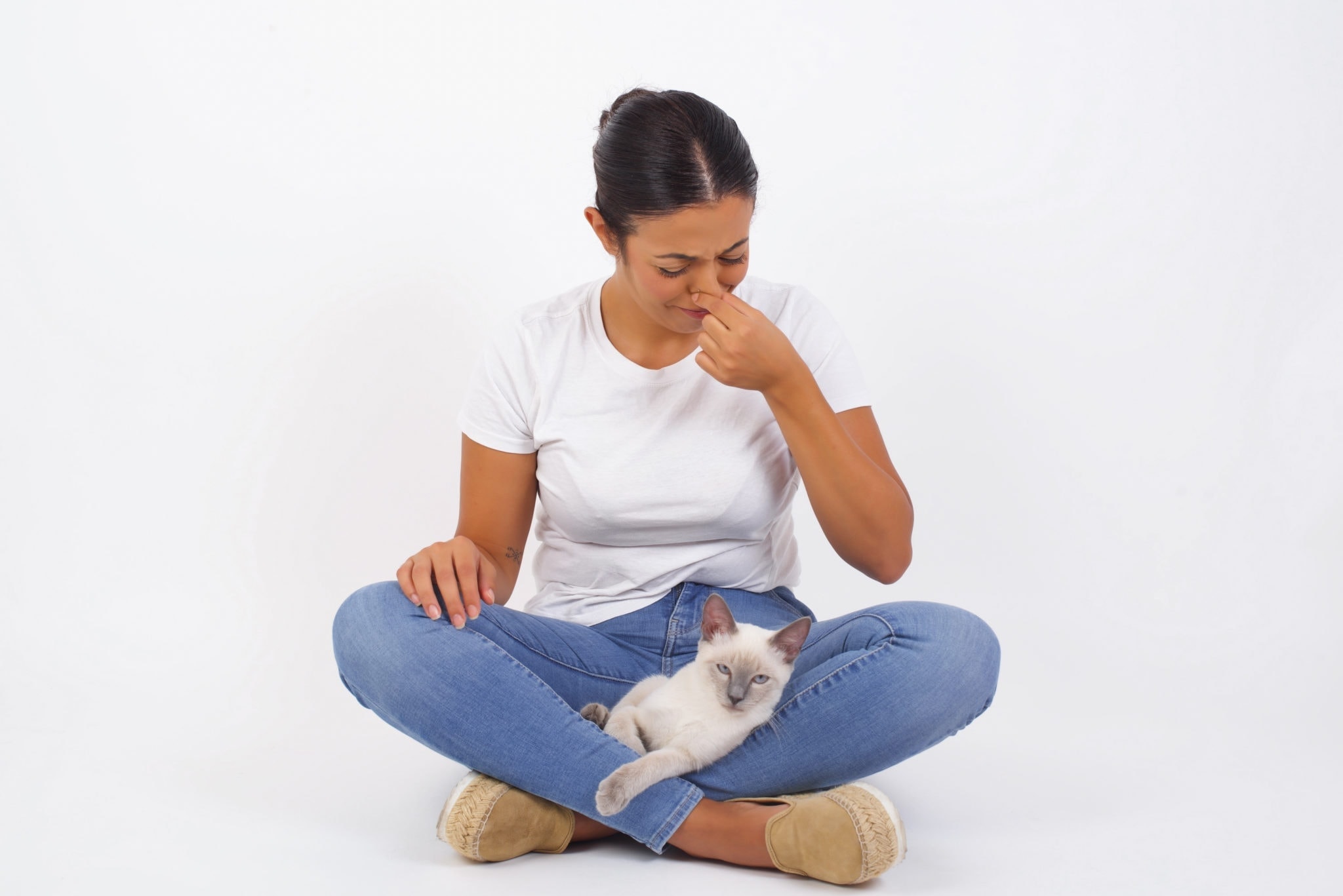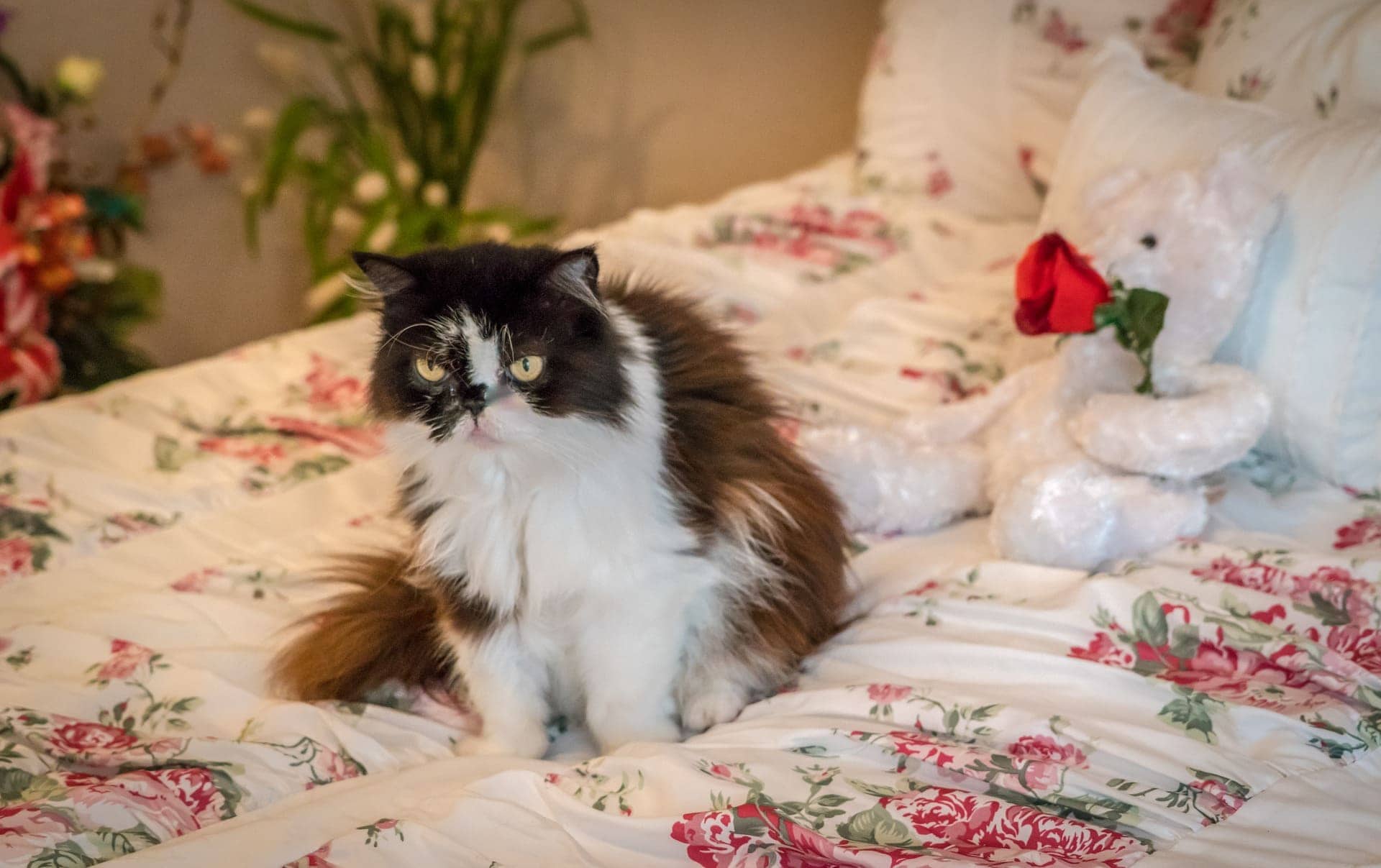E. Coli Infection in Cats: Vet Explained Causes, Signs & Treatments

Updated on
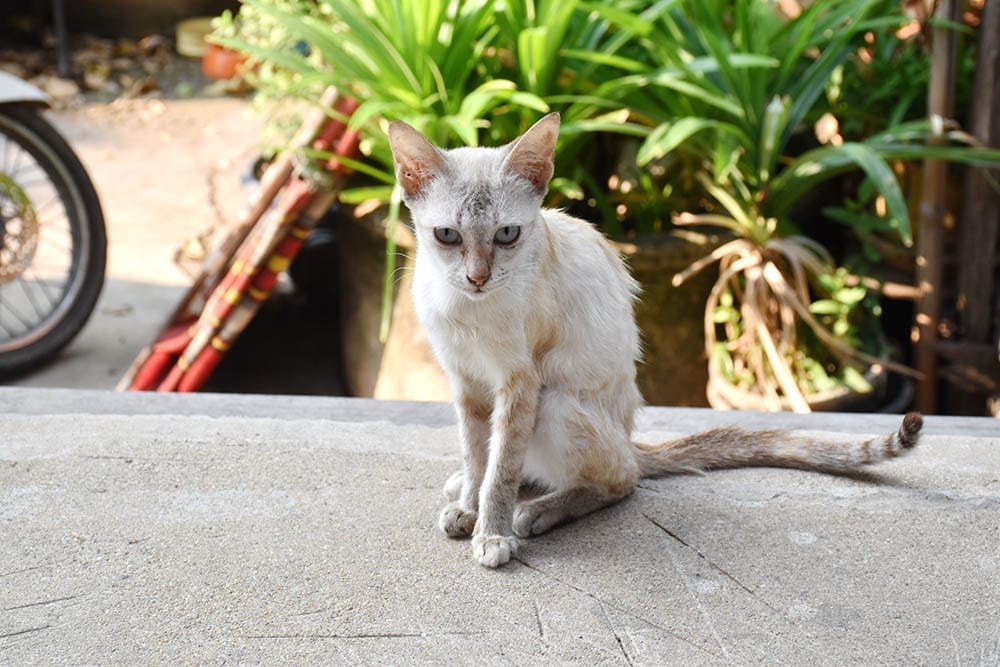
Click to Skip Ahead
E. coli is a family of bacteria. However, there are many, many types of E. coli within the very large family of bacteria, whose full name is Escherichia coli—shortened to E. coli. Each type has its own evolutionary characteristics.
As a bacteria, E. coli can cause infections in animals, and depending on where the infection is in the body and the type of infecting E. coli, the signs, and clinical significance vary.
E. coli can also live in cat bodies without causing infection. Read on to learn more about these diverse and adaptable bacteria.
First, a Vocabulary Lesson
Before we learn more about E. coli infections in cats, let’s learn some vocabulary. It is important to discuss E. coli because sometimes E. coli is harmless but sometimes devastating.
- Pathogenic. Pathogenic means it causes disease. So, when E. coli is pathogenic, it can cause sickness and infections.
- Non-pathogenic. Non-pathogenic means it is not causing disease. This type of bacteria can live in harmony with the body and often helps the body function normally.
Exploring the difference between these two states will help us understand E. coli infections in cats.

What Is E. Coli?
Now to the specifics. E. coli is a bacterium that lives in the digestive system of just about all animals, non-pathologically, and usually does not cause any problems. However, there are three main ways that E. coli can infect cats.
1. A Pathogenic Strain
Some types of E. coli are particularly pathogenic. When a cat is exposed to pathogenic E. coli, they can become sick. Usually, they have to ingest it after they are exposed to the feces of infected animals.
This type of E. coli infection is common in other species of domestic animals, particularly cows and pigs. However, not as much is known about pathogenic E. coli in cats. So, while it probably happens, not much research has been done on cats specifically.
However, this type of E. coli is important because if a cat has pathogenic E. coli, it is usually contagious and can spread to other animals and people.
2. Urinary Tract
This is a very common E. coli infection in cats, more common than E. coli causing digestive tract issues or other infections. An otherwise non-pathogenic strain of E. coli gets into a place where it should not be; the most common place is the urinary tract. A healthy urinary tract is sterile; however, if bacteria get in, they can cause a disease: a UTI.
The skin is another place where E. coli can cause infection, particularly when there are cuts or abrasions. However, other bacteria tend to be more common skin pathogens.
So even a non-pathogenic strain of E. coli can become pathogenic in the wrong part of the body.
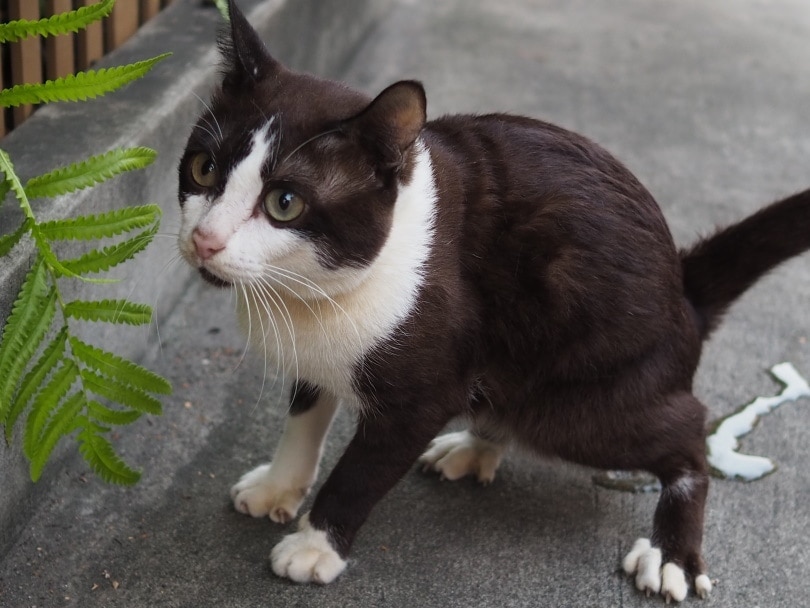
3. Weak Immune System
If too much E. coli enters the system, it can get overwhelmed, especially if the immune system cannot hold the bacteria at bay. This happens most of the time in kittens because their immune system is still developing. The E. coli causes severe diarrhea, and because the immune system is too weak, the bacteria get into the blood system, which can be deadly. When the digestive system is infected with E. coli, it is sometimes called colibacillosis.
What Are the Signs of E. Coli?
The most common signs of an E. coli infection in cats are as follows:
- Painful urination
- Red-stained urine
- Abnormally frequent urination
- Abnormal urination patterns
However, if E. coli infects the digestive tract, it will cause digestive system problems. Some signs of E. coli in the digestive tract are as follows:
- Diarrhea
- Weakness
- Dehydration
- Depression

What Are the Causes of E. Coli?
It is difficult to know what type of bacteria is causing a particular infection, especially without diagnostic testing. For example, diarrhea is also commonly caused by other bacteria such as:
- Campylobacter
- Salmonella
- Clostridium
So, an important step when diagnosing bacterial infections is testing the bacteria to determine the family it belongs to.
This is done with culture and sensitivity testing, where the bacteria are grown in a lab on Petri dishes, and the bacteria is identified.
The Importance of Finding the Cause
Culture and sensitivity testing also tests the efficacy of different antibiotics against bacteria. Different antibiotics work better against E. coli than others, so knowing the type of bacteria helps vets select the right medication.
Plus, antibiotic resistance is becoming more common and more of a problem. An antibiotic that should work against a particular strain of bacteria does not. So, it does not kill the bacteria when we expect it to—making it pointless.
A culture and sensitivity test tells us as soon as possible which antibiotics will work against the particular strain of bacteria in the infection.
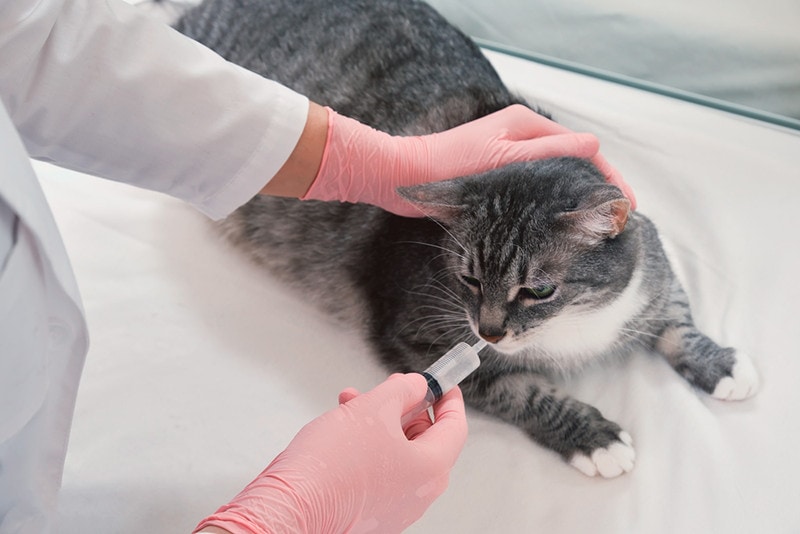
How Do I Care for a Cat With E. Coli?
Working with your vet and performing the necessary diagnostics tests to identify the E. coli is the best thing to do with any E. coli infection. But each type will require different treatment and care.
Rogue E. Coli
A cat with an E. coli infection in a part of the body where it should not be (i.e., a UTI) will need antibiotics to treat the infection. Preferably those antibiotics will be chosen using a culture and sensitivity test, as discussed above. Most of these infections can be treated with outpatient veterinary appointments and follow-ups. Some UTIs can be frustrating to treat and take a long and involved amount of time.
Pathogenic Strains of E. Coli
If a cat has an E. coli infection in the digestive system, it becomes a little more complicated. Antibiotics may or may not be used.
If a kitten has severe diarrhea, they will need more intensive treatment. Bring them to the vet immediately. They will likely need IV fluids and supportive care in the hospital to survive.
Adults with diarrhea may be able to recover on their own, or they may need veterinary intervention. Monitor your sick cat and take them to the vet if they do not improve or the diarrhea is severe.
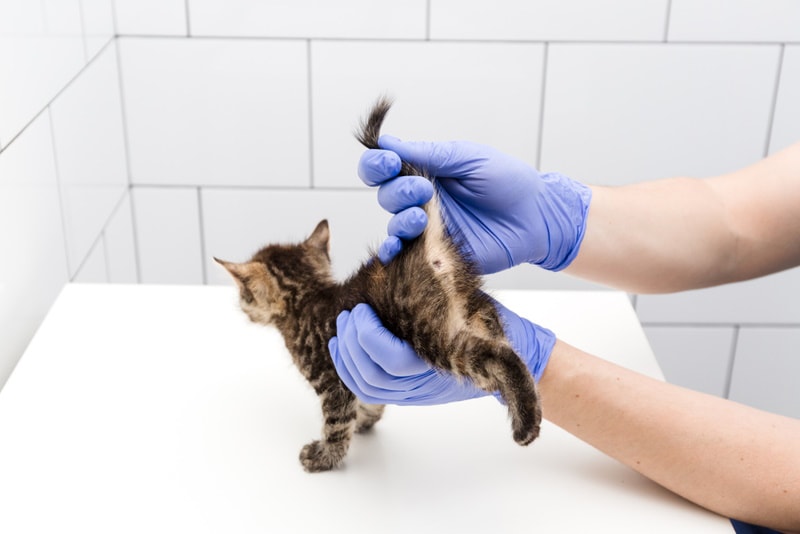
Frequently Asked Questions (FAQs)
Why hasn’t my vet given antibiotics to my cat with diarrhea?
Diarrhea does not always respond to oral antibiotics, and sometimes they can make it worse!
Antibiotics can worsen diarrhea by disrupting the GI tract’s natural microbiome.
The digestive tract has natural, healthy bacteria that help it digest food. This is why probiotics have become so popular; they encourage the microbiome to flourish (supposedly).
Antibiotics in the digestive tract kill off all the bacteria, good and bad. And often, when it recovers and the bacteria starts to grow back, the bad—the pathogenic— bacteria come back even stronger while the beneficial bacteria struggle.
Not giving diarrhea patients antibiotics gives the non-pathogenic microbiome a chance to out-compete the pathogenic bacteria. It actually allows the natural microbiome a chance to heal itself.
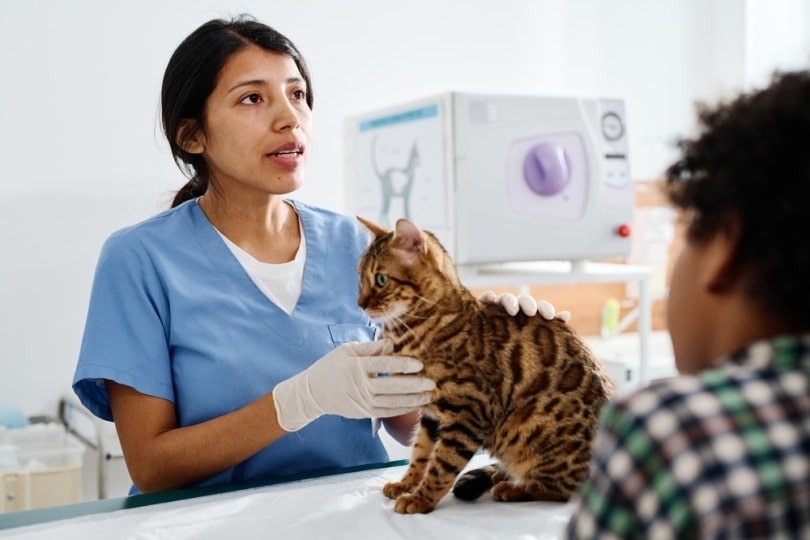
But why do they give antibiotics for UTIs?
Because there is no microbiome in the urinary system. It is supposed to be sterile. So, by killing off the bacteria there with antibiotics, the natural order of things is, in fact, restored.
What if my cat has an antibiotic-resistant strain of E. coli?
These can be difficult to treat with antibiotics. Sometimes just changing to a different antibiotic will do the trick. But other times, multiple antibiotics might be needed to attack the resistant bacteria with everything we got.
But an antibiotic-resistant bacteria can be a real problem—it can be deadly. This is why culture and sensitivity testing are so important: to reduce antibiotic resistance and catch it as early as possible.
How did my cat get an E. coli infection?
E. coli is part of the digestive system’s microbiome; it lives in the digestive tract of cats and other animals. So, most of the time, cats are exposed to E. coli by fecal matter.
They can also be exposed to pathogenic E. coli by eating raw meat, either from contaminated meat from the store or from eating wild animals they have caught outside.
E.coli also sneaks up the urinary tract by slipping past the natural barriers, going up the urethra and into the bladder, slowly spreading along the system.
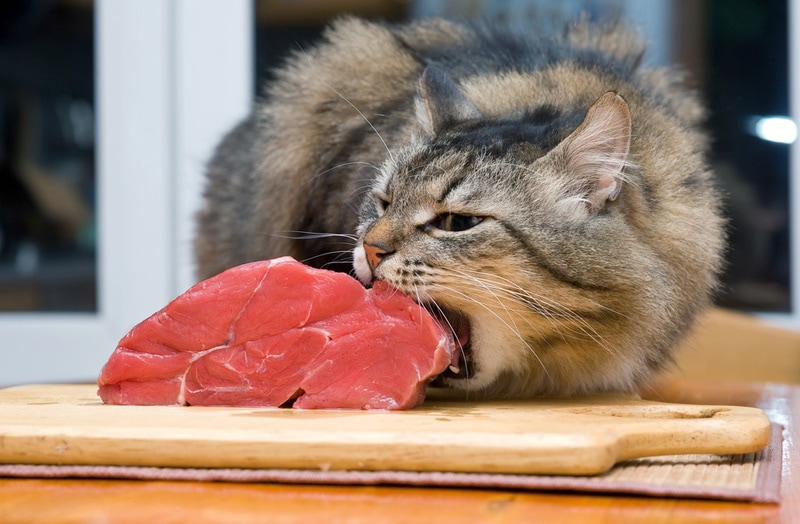
Conclusion
E. coli is a diverse family of bacteria that can cause several problems in cats. The most common is as an UTI. But it can also cause digestive tract problems and infect pretty much any part of the body if given the opportunity.
Making sure your cat has a healthy digestive tract by feeding them a well-balanced diet that is definitely not contaminated with pathogenic E. coli is important. And maintaining a healthy urinary tract is another article.
Featured Image Credit: Benchamaporn Kanlapungha, Shutterstock


